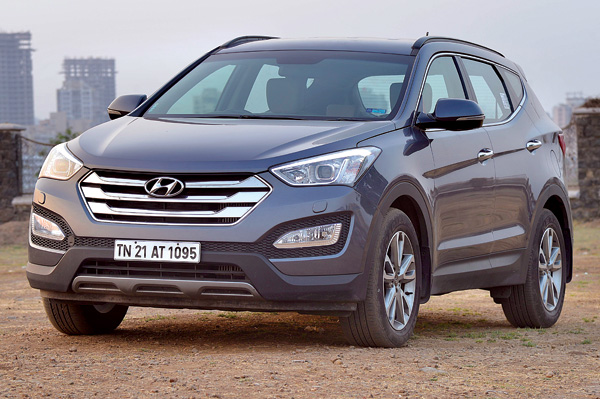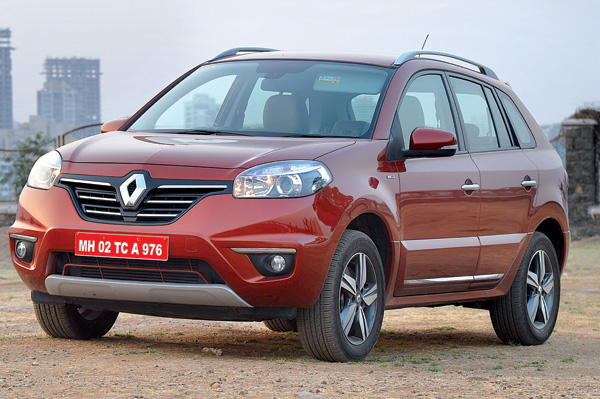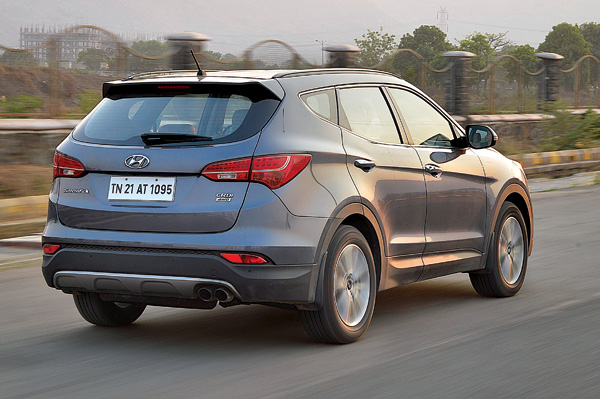What’s new?
Both Renault and Hyundai have not-so-fond memories of selling premium SUVs in India. Hyundai originally started with the Tucson, which was an impressive little soft-roader but never really wooed buyers. Even the previous-generation Santa Fe didn’t find many buyers. Renault’s Koleos has been on sale in India for more than two years and it has had around the same measure of success. But, demand for premium SUVs is steadily growing and the brand new Santa Fe and the updated Koleos are proof of that.
The latest Santa Fe looks nothing like its predecessor and that’s a good thing. Out go the mundane lines of the older car and in comes a fresh, bold new look. The combination of muscular SUV lines, immense road presence, a torquey diesel and Hyundai’s efficient aftersales service and dealer network, makes the Santa Fe a very tempting buy. But, priced at a hefty Rs 29 lakh for this top-of-the-line diesel automatic, it is a full Rs 3 lakh more expensive than the Renault Koleos.
The Renault Koleos has always been a strong contender in this segment and, with the recent facelift, it has become more desirable. It doesn’t have the Santa Fe’s modern flair as far as looks are concerned and it hasn’t been as successful. But it’s got its fundamentals right, like its good driving dynamics and spacious cabin. The updated engine now makes more power too. The fact that it’s cheaper than the Hyundai only adds to its overall appeal.
But which SUV is the best? Should you pay more for more or pay less for less? That’s the big SUV-sized question.
What are they like to drive?
With powerful four-cylinder engines under the hood, these SUVs have more than adequate power to offer. On paper, it’s the Santa Fe that’s way more powerful than the Koleos, and this gives it a big advantage. Powered by a 2.2-litre four-cylinder motor that makes a healthy 194bhp, the Santa Fe’s engine is supremely smooth and sounds so sweet – you could easily mistake it for a petrol-powered car. There’s only a hint of diesel motor rattle, very little vibration, and even when you rev it, it never sounds harsh.
With loads of pulling power – the diesel motor makes light work of the Santa Fe’s heavy, near two-tonne kerb weight. Normal driving conditions need only a gentle dab on the accelerator pedal, and the Santa Fe surges forward effortlessly. The engine is flexible too and in normal D mode, the gearbox shifts up gears much earlier, so progress is relaxed, but adequately rapid. Thanks to its linear power delivery, the big Hyundai feels easy to drive in traffic as well. The gearshifts, though smooth, are a bit slow and remind you that refinement and comfort have been given more priority than ultimate performance. It helps that you can shift gears manually when you need that sudden acceleration for quick overtaking. Performance is strong, with 100kph coming up in a rapid 9.53sec, which is as fast as many sedans.
The Koleos, on the other hand, is powered by a smaller 2.0-litre turbocharged engine, producing 170bhp of power and mated to a six-speed automatic gearbox. What is clear when you drive both of them is that the Renault lacks the punch of the Hyundai. The engine feels a tad weak before that characteristic strong surge of a turbo-diesel comes in. Because of some throttle lag, the Koleos takes time to gain momentum from low speeds. Still, the automatic gearbox does a good job of minimising it and, once on the move, performance is quite strong. The Renault engine feels best when at medium speeds, because when you rev it past 3800rpm, there’s a distinct vibration that creeps into the cabin and the motor sounds quite harsh. The gearbox is also too relaxed for spirited driving but shifting to manual mode enhances the experience dramatically.



